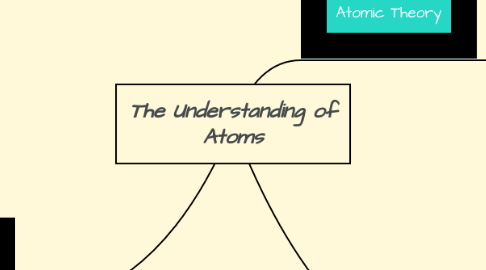
1. How Atoms Differ
1.1. Nuclear Decay
1.1.1. Radioactive decay (also known as nuclear decay, radioactivity or nuclear radiation) is a condition and natural process in which subatomic particles (protons and neutrons) within the atomic nucleus of a radioisotope decay due to the instability of the atom.
1.2. Isotopes
1.2.1. Isotopes are variants of a particular chemical element which differ in neutron number, and consequently in nucleon number. All isotopes of a given element have the same number of protons but different numbers of neutrons in each atom.
1.3. Ion
1.3.1. An ion is an atom or molecule that has a nonzero total electric charge (the total number of electrons does not equal the total number of protons). Cations are positively charged ions , while anions are negatively charged ions .
2. Atomic Theory
2.1. Dalton
2.1.1. All matter was composed of atoms, indivisible and indestructible building blocks.
2.2. Democritus
2.2.1. Everything is composed of “atoms”, which are physically, but not geometrically, indivisible. Between atoms, there lies empty space. Atoms are indestructible.
2.3. Bohr
2.3.1. Energy is transferred only in certain well defined quantities.
3. Parts of an Atom
3.1. Electron
3.1.1. the electrons basically which are very much smaller, whiz around the outside
3.2. Protons
3.2.1. The protons and neutrons are packed together into the center of the atom (which is called the nucleus)
3.3. Nucleus
3.3.1. The nucleus is an organelle found in Eukaryota cells. Inside its fully enclosed nuclear membrane, it contains the majority of the cell's genetic material.

